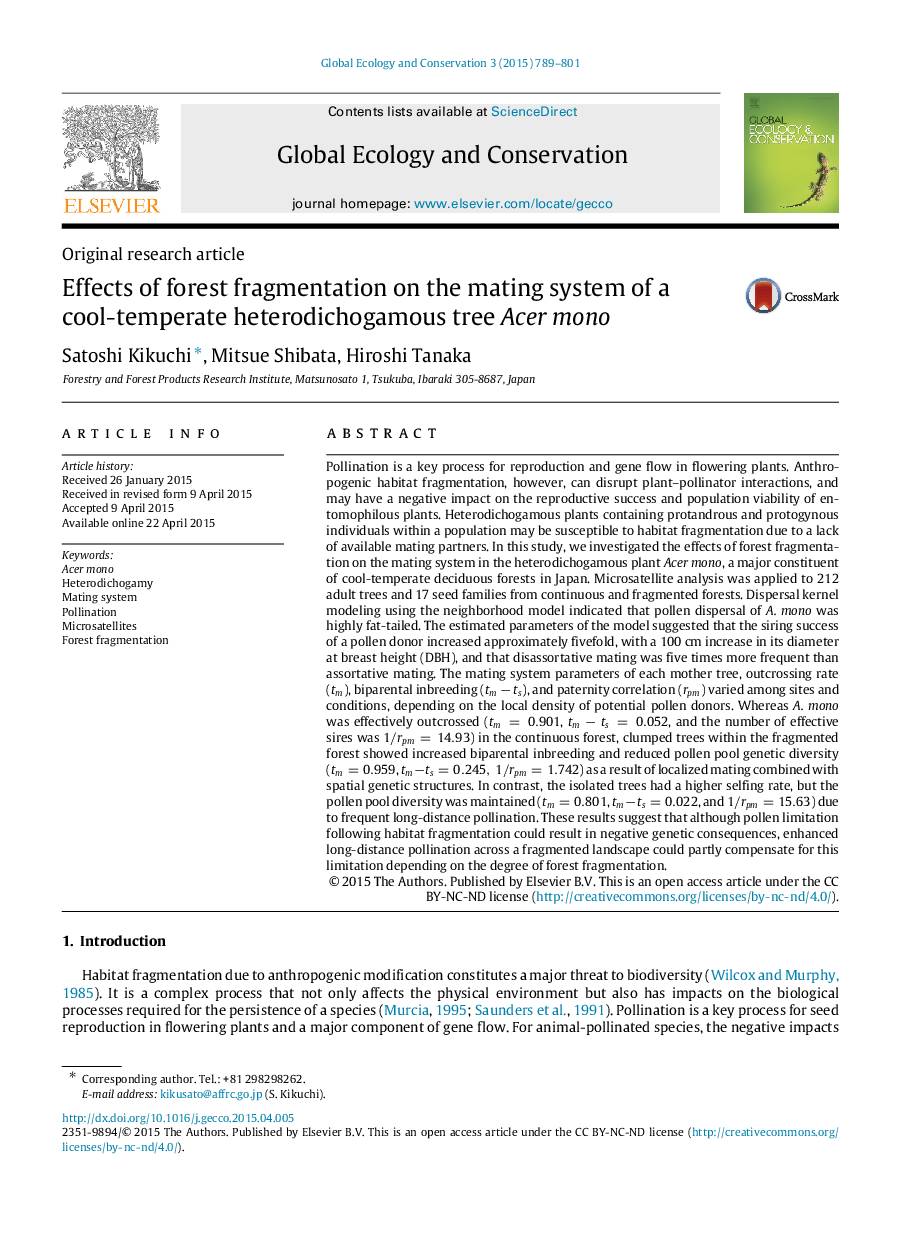| Article ID | Journal | Published Year | Pages | File Type |
|---|---|---|---|---|
| 4379605 | Global Ecology and Conservation | 2015 | 13 Pages |
Pollination is a key process for reproduction and gene flow in flowering plants. Anthropogenic habitat fragmentation, however, can disrupt plant–pollinator interactions, and may have a negative impact on the reproductive success and population viability of entomophilous plants. Heterodichogamous plants containing protandrous and protogynous individuals within a population may be susceptible to habitat fragmentation due to a lack of available mating partners. In this study, we investigated the effects of forest fragmentation on the mating system in the heterodichogamous plant Acer mono, a major constituent of cool-temperate deciduous forests in Japan. Microsatellite analysis was applied to 212 adult trees and 17 seed families from continuous and fragmented forests. Dispersal kernel modeling using the neighborhood model indicated that pollen dispersal of A. mono was highly fat-tailed. The estimated parameters of the model suggested that the siring success of a pollen donor increased approximately fivefold, with a 100 cm increase in its diameter at breast height (DBH), and that disassortative mating was five times more frequent than assortative mating. The mating system parameters of each mother tree, outcrossing rate (tmtm), biparental inbreeding (tm−tstm−ts), and paternity correlation (rpmrpm) varied among sites and conditions, depending on the local density of potential pollen donors. Whereas A. mono was effectively outcrossed (tm=0.901tm=0.901, tm−ts=0.052tm−ts=0.052, and the number of effective sires was 1/rpm=14.931/rpm=14.93) in the continuous forest, clumped trees within the fragmented forest showed increased biparental inbreeding and reduced pollen pool genetic diversity (tm=0.959tm=0.959, tm−ts=0.245,1/rpm=1.742) as a result of localized mating combined with spatial genetic structures. In contrast, the isolated trees had a higher selfing rate, but the pollen pool diversity was maintained (tm=0.801tm=0.801, tm−ts=0.022tm−ts=0.022, and 1/rpm=15.631/rpm=15.63) due to frequent long-distance pollination. These results suggest that although pollen limitation following habitat fragmentation could result in negative genetic consequences, enhanced long-distance pollination across a fragmented landscape could partly compensate for this limitation depending on the degree of forest fragmentation.
